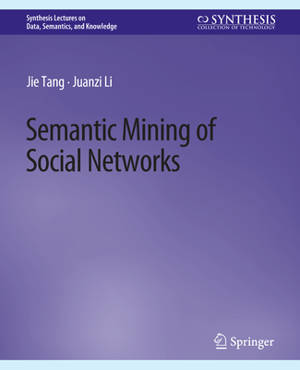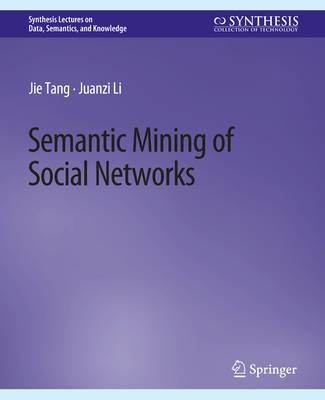
- Retrait gratuit dans votre magasin Club
- 7.000.000 titres dans notre catalogue
- Payer en toute sécurité
- Toujours un magasin près de chez vous
- Retrait gratuit dans votre magasin Club
- 7.000.0000 titres dans notre catalogue
- Payer en toute sécurité
- Toujours un magasin près de chez vous
Description
Online social networks have already become a bridge connecting our physical daily life with the (web-based) information space. This connection produces a huge volume of data, not only about the information itself, but also about user behavior. The ubiquity of the social Web and the wealth of social data offer us unprecedented opportunities for studying the interaction patterns among users so as to understand the dynamic mechanisms underlying different networks, something that was previously difficult to explore due to the lack of available data. In this book, we present the architecture of the research for social network mining, from a microscopic point of view. We focus on investigating several key issues in social networks. Specifically, we begin with analytics of social interactions between users. The first kinds of questions we try to answer are: What are the fundamental factors that form the different categories of social ties? How have reciprocal relationships been developed from parasocial relationships? How do connected users further form groups? Another theme addressed in this book is the study of social influence. Social influence occurs when one's opinions, emotions, or behaviors are affected by others, intentionally or unintentionally. Considerable research has been conducted to verify the existence of social influence in various networks. However, few literature studies address how to quantify the strength of influence between users from different aspects. In Chapter 4 and in [138], we have studied how to model and predict user behaviors. One fundamental problem is distinguishing the effects of different social factors such as social influence, homophily, and individual's characteristics. We introduce a probabilistic model to address this problem. Finally, we use an academic social network, ArnetMiner, as an example to demonstrate how we apply the introduced technologies for mining real social networks. In this system, we try to mine knowledge from both the informative (publication) network and the social (collaboration) network, and to understand the interaction mechanisms between the two networks. The system has been in operation since 2006 and has already attracted millions of users from more than 220 countries/regions.
Spécifications
Parties prenantes
- Auteur(s) :
- Editeur:
Contenu
- Nombre de pages :
- 193
- Langue:
- Anglais
- Collection :
Caractéristiques
- EAN:
- 9783031794612
- Date de parution :
- 30-04-15
- Format:
- Livre broché
- Format numérique:
- Trade paperback (VS)
- Dimensions :
- 191 mm x 235 mm
- Poids :
- 400 g

Les avis
Nous publions uniquement les avis qui respectent les conditions requises. Consultez nos conditions pour les avis.






